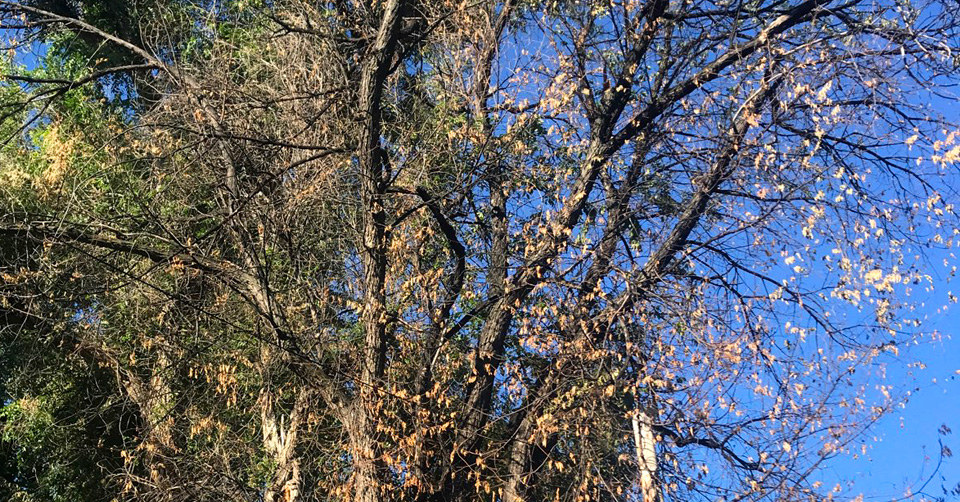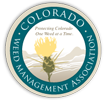
Tree Care Blog
![]()
5 Dutch Elm Disease FAQs
Elm trees are one of the most gorgeous and hardy varieties of shade trees. Reaching heights of 80 to 100 feet tall and spanning 60 to 100 feet wide, these beauties are a common sight here in Northern Colorado, but there has been a massive decline in their numbers lately due to Dutch Elm Disease (DED). This disease can be treated if it is caught early enough and you can count on Fort Collins Tree Care to do everything possible to save your trees from this destructive disease. Check out a few frequently asked questions about DED and then contact our experienced tree care pros for an inspection today.

Frequently Asked Questions About Dutch Elm Disease
What Is Dutch Elm Disease?
First identified in the Netherlands in 1921, Dutch Elm Disease is a type of aggressive fungal disease that affects elm trees that are native to America. The disease is caused by elm bark beetles burrowing into the tree to lay their eggs. As they do so, the fungus enters two of the tree’s essential systems: the water-conducting system and the vascular system. Slowly but surely, the fungus begins to take hold on the inside of the tree, and death is imminent if swift action is not taken.
What Are the Signs of Dutch Elm Disease?
Since early identification of symptoms is crucial for saving a tree with DED, it is important to be familiar with what the early warning signs of it are. Symptoms include:
- Yellowing and wilting leaves
- Brown and curling leaves
- Dead branches
- Discolored sapwood
In its early stages, DED will cause leaves on individual branches to yellow and wilt. As the condition advances, leaves will turn brown and curl as the branches die. From here, symptoms progress rapidly through the crown of the tree, sometimes advancing so quickly that susceptible trees may die within the year. Beyond the crown of the tree, symptoms can also be seen in the sapwood. This is the layer of wood behind the bark. In affected trees, this layer of wood will have a brown discoloration as a result of decreasing sap flow.
Which Types of Trees Are At Risk?
Dutch Elm Disease primarily targets native American elm species as its host plant. This means that the following elm varieties are susceptible to infection:
- Slippery red elm
- Winged elm
- Rock elm
- September elm
- Cedar elm
If you have any of these elm species on your property that are exhibiting signs of DED, it is imperative to get the trees inspected by a tree care professional as quickly as possible. While Asiatic elms may also become infected, varieties like the Siberian elm, Japanese elm, and lacebark elm are far less susceptible to the disease.
Why Should I Worry About Dutch Elm Disease?
Dutch Elm Disease is highly aggressive and can kill mature American elms rapidly. As a property owner, the disease presents several concerns. First and foremost, DED can negatively impact your property’s curb appeal during the early onset of the disease. This can be a concern for individuals who take great pride in their property’s appearance as well as for those who are preparing to put their home on the market.
Beyond aesthetics, DED can present a safety concern on your property. As the disease advances, branches become weak and brittle, making them more susceptible to breaking and falling under the weight of wind, rain, and snow. Not only does this pose a danger to you, your family, your pets, and passersby, but it also poses a safety hazard to your property. An elm branch can be very large and heavy, presenting the risk of extensive property damage if it were to fall on your home.
My Trees Have Dutch Elm Disease — Now What?
As you can see, addressing Dutch Elm Disease quickly is important for many reasons beyond just preserving your tree’s health. If you suspect that you have an affected elm tree on your property, contact Fort Collins Tree Care right away. We will work diligently to confirm whether or not your tree is suffering from DED and do what we can to restore health and beauty to the tree. Managing DED often requires removing infected limbs (also known as sanitation pruning) and applying systemic fungicides. You can trust that our team has the experience and knowledge needed to properly treat your tree. Rest assured that we don’t take tree removal lightly, as we understand the important role your tree plays not only on your property, but also in the ecosystem as a whole. However, if we feel that it is best to remove the tree, our team will advise you of such.
Fort Collins Tree Care Services for Dutch Elm Disease
Do you have an elm tree on your Fort Collins property that is looking a little sick lately? Time is of the essence with tree diseases like Dutch Elm Disease and the sooner you call Fort Collins Tree Care for help, the better chances of survival your tree will have. Our team of experienced arborists will inspect the tree to diagnose the issue and then devise a customized tree care plan that is suitable for your needs and your budget. Contact us today to get started or request your free estimate online now.
| Only when the last tree has died and the last river been poisoned and the last fish been caught will we realise we cannot eat money. |
| ~Cree Proverb |





